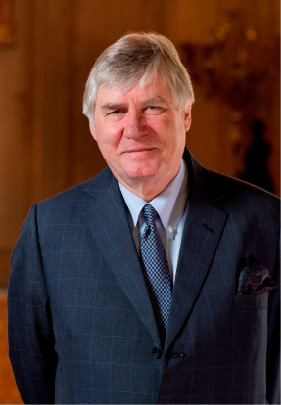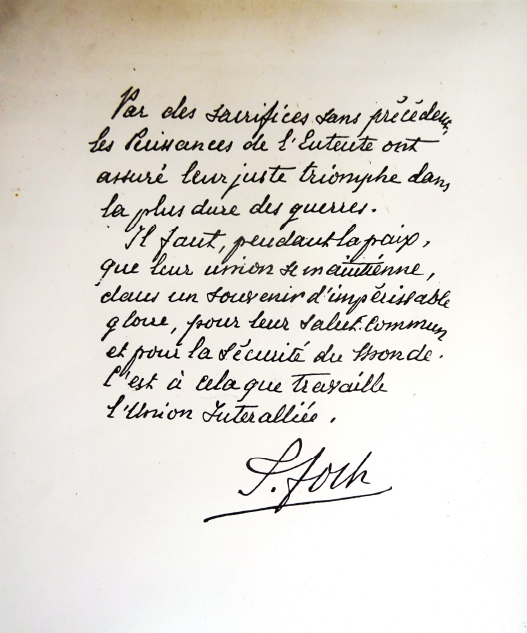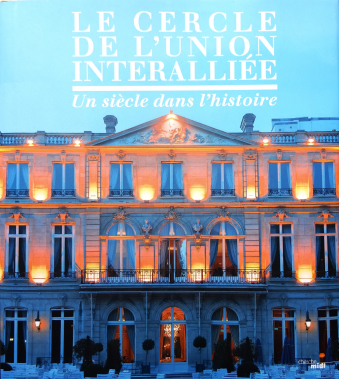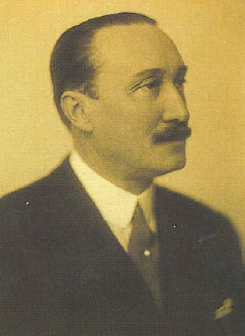Welcome
to the Cercle de l'Union
Interalliée
A harbor of peace in the heart of Paris, with its magnificent salons, its splendid gardens, its contemporary sports complex, its quality cuisine and its rich century-old history, it helps maintain the art of fine living French-style and as a result, France's influence.
A word from the President
100 YEARS OF THE INTERALLIÉ SPIRIT
The Interallié is an atypical institution because it is strongly permeated by the ideal that inspired its founders.
The Interallié was created in 1917 with the purpose of being a place for the welcome and exchanges between the officers and the political leaders of the Allies. Impressed by its efficiency, its founders once again met after the Armistice of 1918 to perpetuate the institution and make it into a circle that would permit the elite of France and friendly nations to better get to know each other and hold discussions.
This act of creation was the founding of the “Interallié spirit.” Here, political and economic decision-makers, diplomats, journalists and today, once again, military leaders, meet informally, exchange their ideas and develop strategies. To paraphrase General de Gaulle, who described the Interallié as the “French embassy in Paris,” this place is intended to favor “relaxation, understanding and cooperation” between the French and international elite.
During this century of existence, the Interallié has always also been a mecca of cultural activities and artistic express. The lectures, literary prizes, concerts and exhibitions have succeeded each other at a rapid pace in order to provide its members with the possibility of meeting writers and artists and familiarizing themselves with their works.
A haven of peace in a tormented world, the Interallié, with its beautiful restored historic salons, its magnificent garden, its contemporary sports center, its quality cuisine and its rich century-long history, helps maintain a French-style art of fine living and, as a result, France’s influence.



Livre du centenaire

What a fabulous destiny the Cercle de l'Union Interalliée has had! Created in 1917, when the United States officially entered World War I, it was the fruit of the determination of a handful of exceptional men, among them Field Marshall Foch, who chose this splendid private mansion, an 18th-century gem, to create a place to welcome the officers and statesmen of the Allies.
Immediately after the Armistice on November 11, 1918, the same founders created a real estate company that acquired the building, and the Cercle Interallié settled “within its walls” would then become a privileged venue for international relations and Parisian cultural life. Through this beautiful book, we can “relive” this Cercle from its founding in the early 20th century to the present day. There is even a look back on the two centuries of this private mansion before it became the Cercle.
In it, we discover that in the years between the wars, the Cercle Interallié dazzled, that it was the regular host of sovereigns and heads of state passing through Paris – including the young Hirohito, the future emperor of Japan – and a mecca of Parisian literary life. Paul Valéry, André Gide, Jean Giraudoux and Duchess Edmée de La Rochefoucauld met there regularly, as did, early on, Louise de Vilmorin, who would be especially very present in the 1950s. The Cercle Interallié was also regularly enlivened by plays with Sacha Guitry or music recitals under the impetus of Nadia Boulanger. The Occupation from 1940 to 1944 would put a sudden end to this brilliant cultural and diplomatic life at the Cercle, which would temporarily find a refuge in the salons of the Nouveau Cercle on the boulevard Saint-Germain.
Looking through this book, you will find the graceful atmosphere of the 1950s with Louise de Vilmorin as icon, the frequent visits of Paul Claudel and André Malraux, as well as the “diplomatic ballet” of the 1960s with the frequentation at the Cercle of many figures of state and European sovereigns. Brilliant galas succeeded each other at which Princess Margaret could be found one time, Grace Kelly, who became Princess of Monaco, another. The loss of interest in traditions of young people in the 1960s and 1970s would then cause the relative decline of the Cercle, which “saw itself age,” in the forceful words of Jean de Beaumont...
It was then, in 1974, that the president of the period, Prince de Faucigny-Lucinge, had the audacity to create the sports center with its magnificent swimming pool, an architectural gem. In 1979, Count Jean de Beaumont welcomed the Nouveau Cercle, which had been forced to leave its historic building – a well-deserved thank-you for the mutual aid it provided during the years of the Occupation, but also a welcome contribution from new members from a prestigious circle at a critical moment.
From the late 1990s to the present day, the successive presidents, Jean de Beaumont, Pierre-Christian Taittinger and myself, have undertaken major renovation and decoration work that modernized the building while embellishing it, and thanks to which the Cercle has revived its former prestige.
Its life today is more discreet than in the past, but the original spirit continues to prevail. The Cercle is clearly this venue of exchanges between the French and international elite, it is warm and open, and it offers its members and their guests the possibility of cultivating friendship through the many activities it proposes. French society has undergone rapid and sometimes sudden mutations for decades, but the Cercle Interallié remains a reference and, thanks to the timeless art of fine living that it proposes, it can captivate the different generations, including the youngest ones.
Denis de Kergorlay

The founding
Members
Interalliée are:
- Count Marc de Beaumont
- Marquis de Bryas
- Mr. Paul Dupuy
- Mr. Arthur Meyer
- Mr. Jean de Sillac
- Count d'Andigné
- Mr. S. Bardac
- Mr. du Breuil de Saint Germain
- Mr. André Citroën
- Mr. Léon Dumontet
- Count de Fels
For a total of 11 Founders
The Presidents of the Cercle
The Presidents from the beginning
- 1917-1919
Vice-Admiral Fournier, President
- 1920-1928
Marshal Foch, President
Count Marc de Beaumont, Founder and Deputy Vice-President
- 1929-1932
Jules Cambon, President
Count Marc de Beaumont, Founder and Deputy Vice-President
- 1933-1935
Jules Cambon, President
- 1936-1937
Gaston Doumergue, Honorary President
- 1938-1942
Prince de Beauvau-Craon, President
- 1943-1945
Admiral Lacaze, Deputy Vice-President
- 1946-1953
Count Stanislas de Castellane, President
- 1954-1959
Count Stanislas de Castellane, President
- 1960-1975
Prince Jean-Louis de Faucigny-Lucinge, President
- 1975-1999
Count Jean de Beaumont, President
- 1999-2009
Pierre-Christian Taittinger, President
- 2009
Comte Denis de KERGORLAY, President

